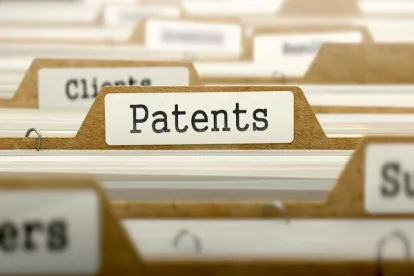The Supreme Court recognized long ago that a patentee can overcome a prima facie showing of obviousness by presenting objective evidence of non-obviousness, referred to as secondary considerations.[1] To do so, however, the patentee must establish a nexus between the challenged claims and the objective evidence. In a newly designated precedential decision, Lectrosonics, Inc. v. Zaxcom, Inc.,[2] the United States Patent and Trademark Office (“USPTO”) Patent Trial and Appeal Board (“PTAB”) explained how to establish that nexus in an inter partes review (“IPR”). The PTAB also showed how amendment proceedings in an IPR open the door for a patent owner to add the required nexus to the claims.
The patent in Lectrosonics was directed to a system and method for recording and processing audio when multiple tracks are received from multiple wireless devices. The system was particularly useful for recording the audio of multiple actors in films and movies. It allowed for the easy synching of audio when a separate recording device is used for each actor.
In the IPR proceeding, the PTAB found that the petitioner established a prima facie case that each of the challenged claims was obvious based on a combination of references. To rebut this showing, the patent owner relied on declarations and user manuals in an attempt to establish secondary considerations of long-felt need, failure of others, and industry praise of the patented invention. And the patent owner had a pretty great ace up its sleeve—its product received an Emmy award and a Technical Achievement Award from the Academy of Motion Picture Arts and Sciences. The Emmy and Oscar appeared prominently in the patent owner’s briefing and again at oral argument. The PTAB seemed duly impressed by these honors, but it did not allow these shiny objects to distract it from the nexus requirement.
In analyzing the nexus requirement, the PTAB leaned heavily on the Federal Circuit’s decision this past December in Fox Factory, Inc. v. SRAM, LLC.[3] In this decision, the Court made two provisions. First, a patent owner is entitled to a presumption of a nexus if it can show the objective evidence is tied to a specific product that is coextensive with the claimed features. A product is not coextensive with a claim if it includes critical, unclaimed features that are claimed by a different patent and that impact the product’s functionality.
Second, even if the patent owner does not meet the bar for a presumption of a nexus, the patent owner still has an opportunity to prove a nexus by showing that the objective evidence is the direct result of the unique characteristics of the claimed invention. To do so, the patent owner must show that the nexus is to an aspect of the claim that is not already in the prior art. Notably, even if individual features of the claim are in the prior art, the patent owner may show that the claimed combination as a whole serves as a nexus for the objective evidence.
When applying these standards to the patent at issue, the PTAB found that the patent owner failed to establish a nexus between the objective evidence and the original claims. It noted that the evidence was directed to a feature of fixing “dropouts”—a loss of audio data during a wireless transmission. The commercial product fixed dropouts by using replacement data, and it was this feature in particular that earned the product its praise and its trophies. While the dropout fix was discussed in the specification of the patent, it was absent from the original claims.
Fortunately for the patent owner, its attorneys had the foresight to submit substitute claims during the IPR proceedings. And those substitute claims expressly included the feature of fixing dropouts by using replacement data.
When reviewing the patent owner’s objective evidence with respect to the substitute claims, the PTAB first found that the patent owner failed to show that the product was coextensive with the new claims. Therefore, it did not find a presumption of a nexus. Upon considering the totality of the evidence, however, the PTAB found that a nexus had indeed been established. The awards and other objective evidence were specifically directed to the features that were now being claimed—the fixing of dropouts with replacement data. Thus, the PTAB found the substitute claims to be patentable.
Secondary consideration arguments are often an uphill battle for patent owners, because of the need to establish a nexus between a claim and the objective evidence. Sometimes the customer-pleasing feature of an invention may not be immediately apparent to an inventor. In such instances, the claims may correctly reflect the technical details of an invention, but still lack the feature that generates commercial success and industry praise. The opportunity to amend claims or submit substitute claims in an IPR allows the patent owner to remedy this problem, as it did in Lectrosonics.
Patent owners and patent challengers can both learn lessons from Lectrosonics. If patent owners intend to rely on secondary considerations as a defense against an obviousness challenge, they should carefully consider amending the claims or submitting substitute claims during the brief window available in an IPR. If patent challengers intend to challenge patents on widely acclaimed or commercially successful products, they should keep in mind the patent owner’s ability to add a nexus through amendment when considering whether to petition for an IPR.
[1] See Graham v. John Deere Co., 383 U.S. 1, 17–18 (1966).
[2] Case IPR2018-01129, Paper 33 (PTAB Jan. 24, 2020) (designated April 14, 2020 as Precedential).
[3] 944 F.3d 1366 (Fed. Cir. 2019).




 />i
/>i

